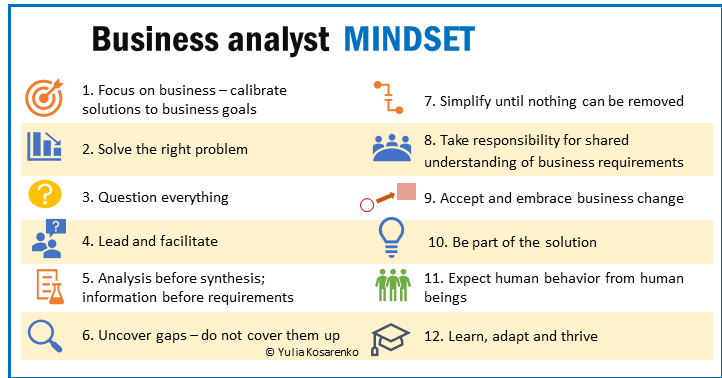
Image licensed under CC BY-SA 4.0 - No Changes (source)
What is digital transformation?
We hear the buzzword “business transformation” everywhere. It has become almost expected of any organization to announce they are on their digital transformation journey. What does it mean?
There are many definitions of digital transformation. This abundance points to a broad interpretation of the term. The ambiguity of these statements reflects vague expectations of many organizations embarking on their “digital transformation journeys”.
According to the CIO magazine, “digital transformation marks a rethinking of how an organization uses technology, people, and processes in pursuit of new business models and new revenue streams, driven by changes in customer expectations around products and services.”
IBM defines it as “a customer-driven, digital-first approach to all aspects of a business, from its business models to customer experiences to processes and operations.”
Gartner notes that “Digital transformation can refer to anything from IT modernization (for example, cloud computing), to digital optimization, to the invention of new digital business models. the term is widely used in public-sector organizations to refer to modest initiatives such as putting services online or legacy modernization.”
Why should we talk about digital transformation?
What are the most important aspects of digital transformations from a business analysis perspective?
1. Digital transformation involves replacing manual or partially automated processes and business operations with digitized and mostly automated. Processes become tightly coupled with business applications, and the success of these processes becomes highly dependent on the software.
2. Digital transformation replaces a significant part of human interactions with digital, often omnichannel interactions: emails, direct messages, and online portals.
3. Digital transformation makes technology an integral part of the product or service.
4. These initiatives often expose major security, data, or organizational challenges that have become an integral part of legacy systems.
5. Digital transformation initiatives drive significant changes within organizations – both from the technology and from the business perspective. The outcomes – whether successful or not – can have a deep impact on staff, customers, suppliers and even the general public. Without a strong business analysis foundation, these changes are unlikely to succeed.
Why do digital transformations fail?

Evidence shows that a significant part of all digital transformations fails. In particular, one study by Boston Consulting Group conducted in 2020 concluded that about 70% of all such initiatives “fall short of their objectives, often with profound consequences.”
Why?
Here are some common themes from a multitude of publications that discuss digital transformation failures:
1) Unclear goals – why do we need this transformation?
2) Siloed mindset and lack of commitment – stakeholder groups driving their departmental agendas, sometimes misaligned with the enterprise objectives.
3) Digitizing existing processes without optimization – “implementing new tech onto broken systems.” (Forbes)
4) Resistance to change
5) Lack of skills
6) Data problems

How can a business analyst make a difference?
For an experienced business analyst, the list of failure reasons above will sound familiar. These are similar to the challenges business analysts face on any project, but the scale may be bigger, and the impact of failure more dramatic.
This may be the main reason why organizations regularly engage external consultants and partners to plan and implement digital transformations. They prefer to rely on external expertise and share the responsibility for success instead of shouldering the whole burden.
There are many advantages to getting help from outside the organization: from the ability to temporarily scale up the resources without hiring staff to addressing organizational skills gaps.
The typical mistake, though, is relying too much on external consultants and underestimating the value of the internal business analysis capability.
The advantages of engaging internal staff with business analysis experience are many:
- Insider wisdom – their business acumen, knowledge of the industry, the company, and who is who in the company.
- System knowledge, including understanding current systems challenges and shortcomings, and awareness of treacherous gaps that, if not addressed, can derail any business transformation.
- Previous project experience from the same organization. Bitter experience from past project challenges and their root causes can both explain current issues and help avoid a repeat.
- Familiarity with business processes, their gaps, and inefficiencies.
- Connections within the company - knowing different personalities, their strengths and weaknesses, ability to find the right allies to support the change.
What can you do as a leader?
1. Understand the value of internal business analysis capability. Talk to the experienced analysts and leads and ask for input on how to best utilize available resources.
2. Involve internal resources in feasibility and initiation activities. Use business analysts or business architects to:
- Capture and assess the current state
- Lead brainstorming sessions
- Visualize future user journeys
- Identify key areas for improvement
- Conduct cost-benefit analysis
- Evaluate external proposals during the Request-For-Proposal (RFP) process
3. Negotiate an active role for the company’s business analysis team in the digital transformation project. Avoid the “black box” approach and make business analysts’ participation and feedback an integral part of the transformation initiative.
4. Ask trusted business analysis resources for confidential feedback during the project. If the transformation initiative starts to take a wrong turn or develop a blind spot, a business analyst may be the first person to realize it. Often, the analyst would not know who to talk to, or would not be listened to. A skip-a-level approach may be helpful, with the leader proactively seeking input.
5. Enforce transparency of requirements management. Requirements must be shared with stakeholders all the time, for continuous validation and optimization.

6. Actively include internal resources in all communications about digital transformations. Other than very confidential components, do not make the transformation a big secret – this is how the trust is lost and how the resistance to change builds up.
7. Engage internal resources with business analysis skills in all phases of the transformation – from architecture blueprint to analysis, design, testing, data migration, and user adoption activities.
What can you do as a business analyst?
- Be available and visible – express interest in strategic initiatives, offer help, and ask to be assigned or seconded to transformation projects. Aside from the value business analysts can bring to the initiative, this can be one of the best professional development opportunities for the employees themselves.
- Learn about business architecture and strategic business analysis. Analyze enterprise architecture artifacts, pay attention to strategic communications, and learn business architecture modelling basics.
- Build a relationship with the architecture team, and Enterprise or Business Architect if they exist in the company. They are more likely to be involved in transformational initiatives and could recommend a business analyst for the project, or help them better understand the initiative objectives and impacts.
- Consider digital transformation impacts on any other projects – if in doubt, always ask questions, research, and seek guidance. Major projects have derailed many smaller initiatives due to bad timing, contradictory goals, or lack of impact analysis.
- Learn more about data, in particular data governance – this is another crucial component of successful transformation, as most of them drive significant data migration – a disaster waiting to happen without proper data analysis.

 Author: Yulia Kosarenko is the owner of Why Change Consulting, offering corporate training and consulting in business analysis and architecture. She is the author of the books "Business Analyst: a Profession and a Mindset", "Business Analysis Mindset Digital Toolkit", creates business analysis courses, and teaches business analytics at the Humber College in Toronto.
Author: Yulia Kosarenko is the owner of Why Change Consulting, offering corporate training and consulting in business analysis and architecture. She is the author of the books "Business Analyst: a Profession and a Mindset", "Business Analysis Mindset Digital Toolkit", creates business analysis courses, and teaches business analytics at the Humber College in Toronto.
Connect with Yulia on LinkedIn or at [email protected].